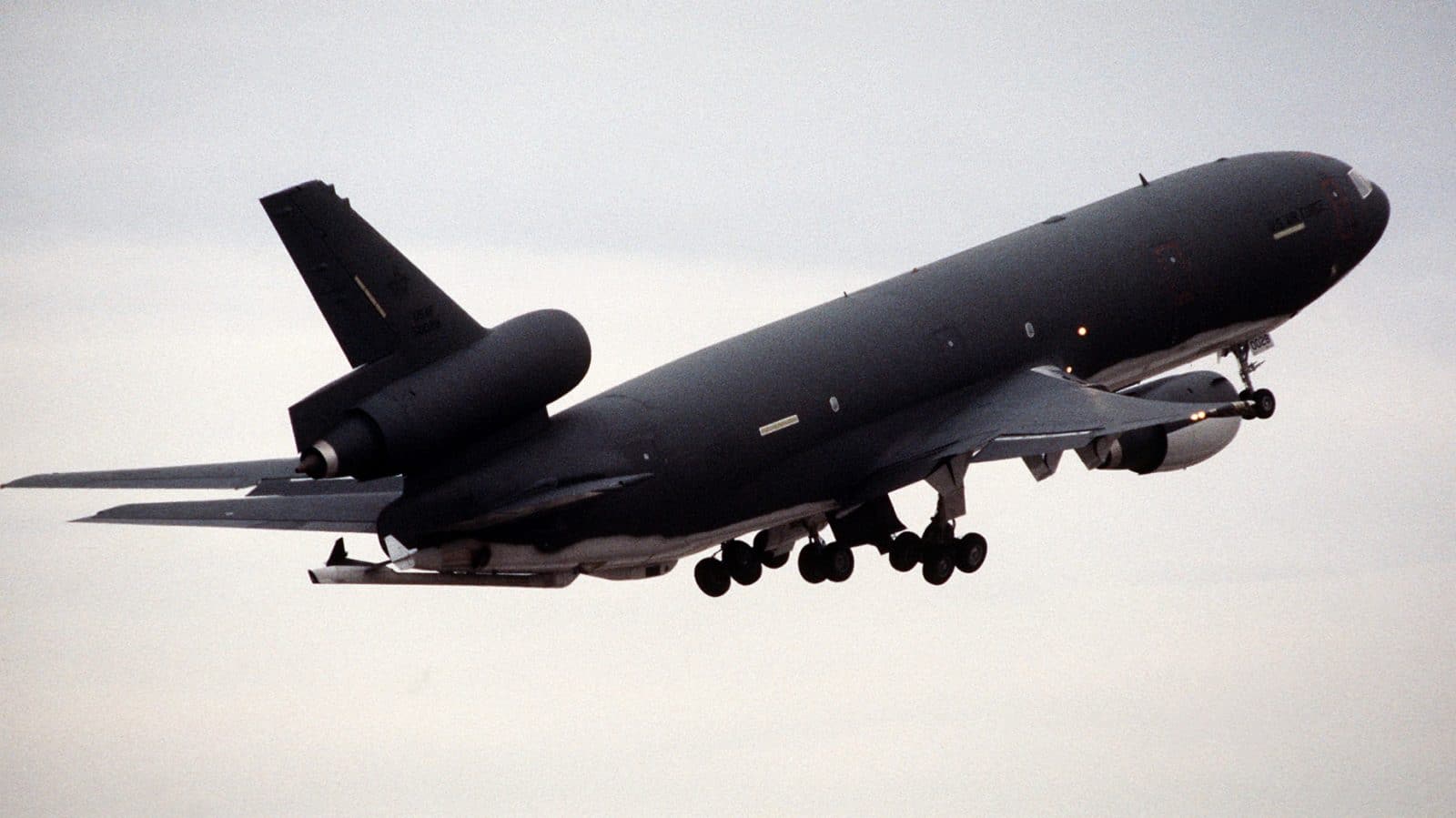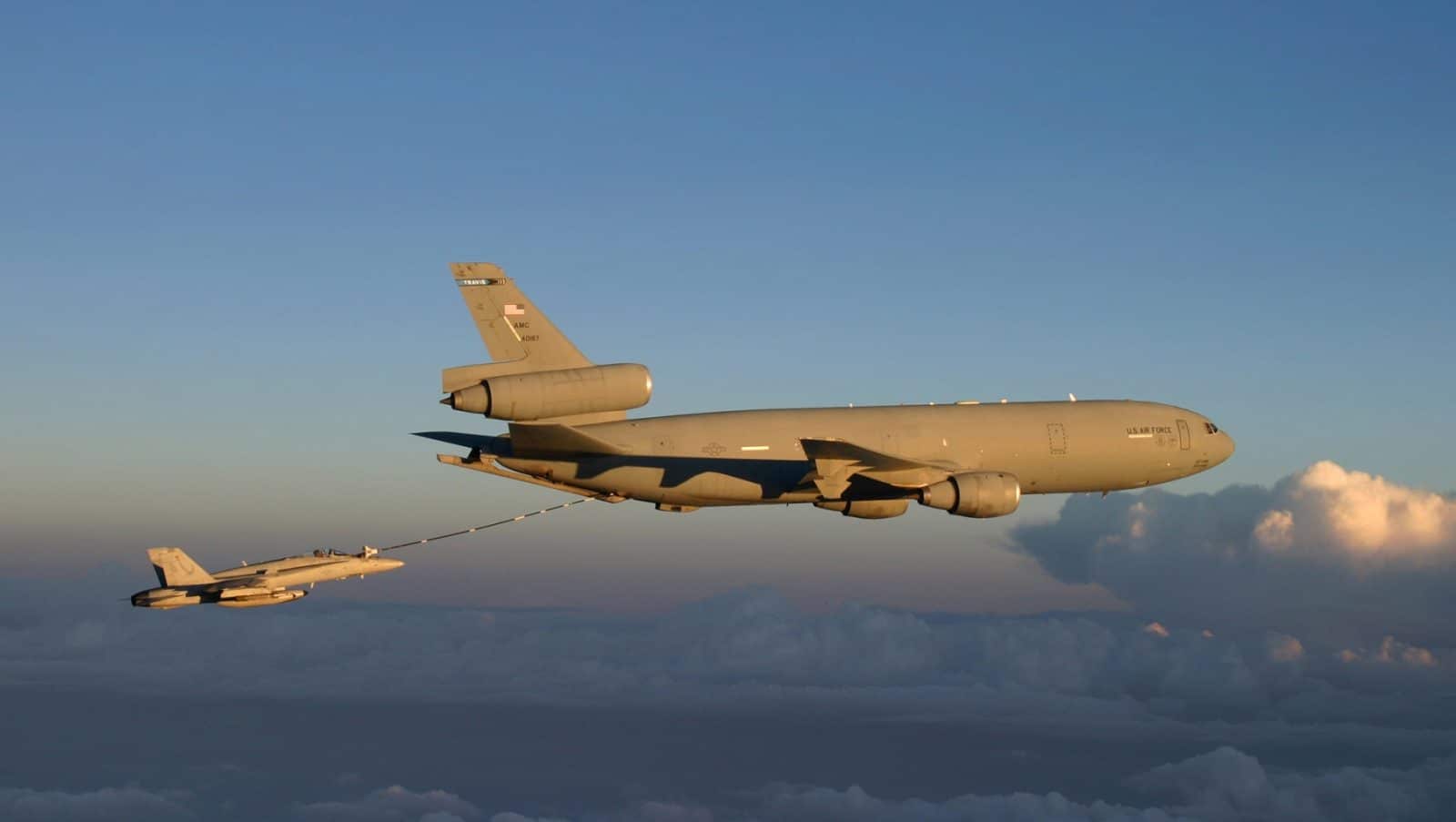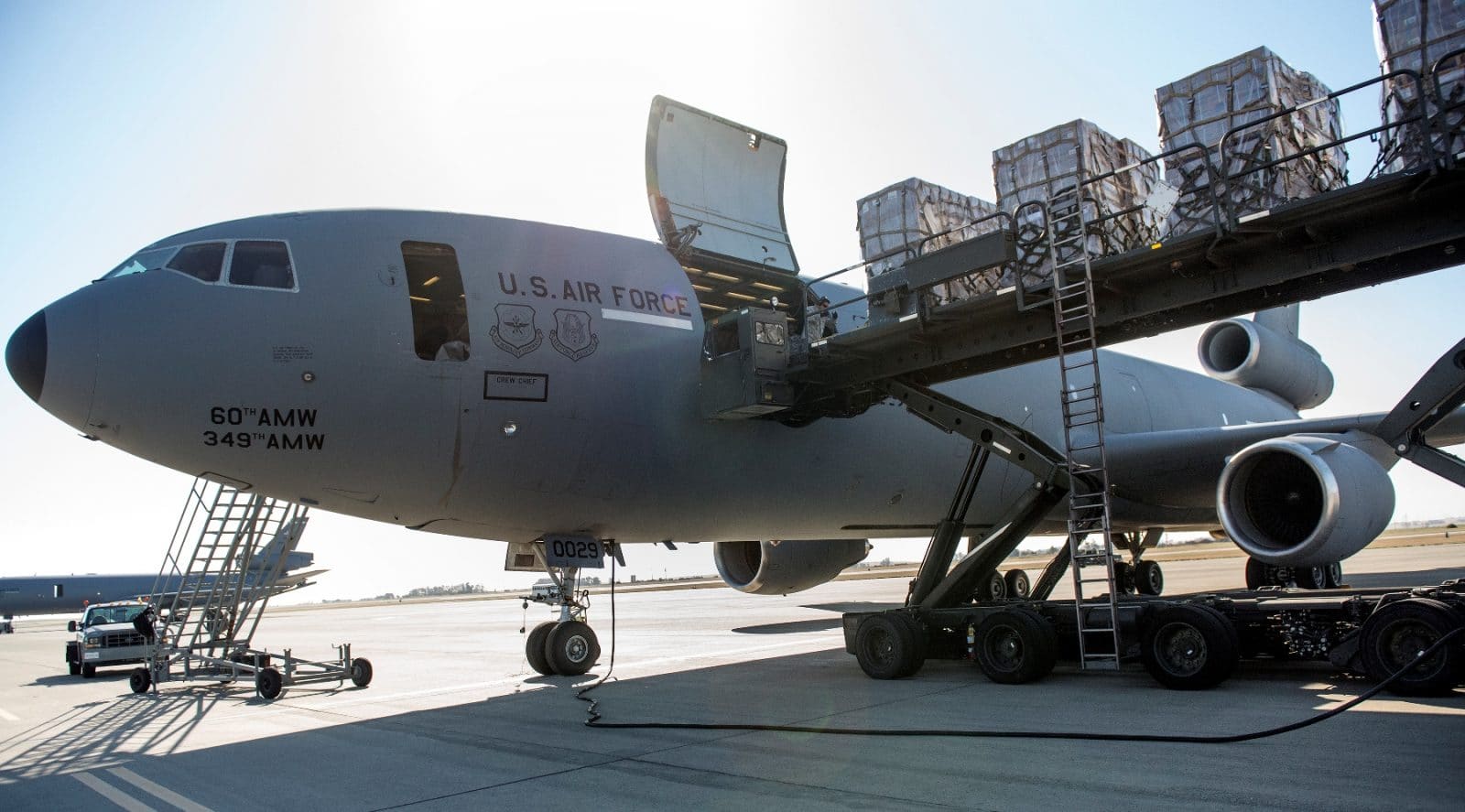No Other Air Force Tanker Combines the Capabilities of This Heavy Lifter
They say there’s “no kicking *ss without tanker gas.” NKAWTG. With so much churn associated with the development of the Boeing KC-46A Pegasus next generation aerial refueling tanker, we sometimes forget about the most recent adaptation of a commercial aircraft for the military tanker role. The McDonnell Douglas KC-10A Extender is built on the DC-10-30CF convertible passenger and cargo variant of the DC-10. It combines the ability to haul copious amounts of cargo and personnel with high fuel transfer capacity via both boom and probe/drogue. In other words, the KC-10A is one flexible young gas passer.

Competition Big and Bigger
The US Air Force took a close look at aerial tanker requirements toward the end of the war in Vietnam and found a need for additional tankers built on wide body platforms allowing higher capacities. In 1975 the Advanced Tanker Cargo Aircraft Program pitted tanker variants of the Lockheed C-5A Galaxy strategic airlifter, the Boeing 747 airliner (designated KC-25), and the Lockheed L-1011 Tristar airliner against the McDonnell Douglas DC-10. The final competition came down to the 747 and the DC-10, with the DC-10 derivative being chosen in 1977 thanks in part to its ability to operate from shorter runways.

McDonnell Douglas Got a Head Start on the KC-10
The KC-10A was first flown in 1980, but development of the KC-10 actually began as soon as the DC-10 airliner version entered service in 1971. Two DC-10s were flown to Edwards Air Force Base in California to simulate potential wake turbulence issues that might be experienced during aerial refueling behind a DC-10-derived tanker in 1972. In 1973 the US Air Force conducted Operation Nickel Grass to supply Israel with weapons and supplies during the Yom Kippur War. The operation reinforced the importance of aerial refueling and flexibility of transport aircraft when political considerations prevented landing rights in Europe.

How to Build a KC-10A Extender
The modifications required to turn a DC-10-30CF into a KC-10A included removal of airliner-specific equipment, most windows, and lower cargo hold doors. Additions included improved cargo-handling systems such as powered rollers and winches, military avionics, seven fuel cells for transferable fuel located in the cargo holds, tail-mounted Advanced Aerial Refueling System Boom (ARRB), probe/drogue refueling equipment, lighting for night operations, and a boom operator station in the aft fuselage. The last 20 KC-10As built were delivered with additional probe/drogue refueling “pods” mounted near each wingtip.

Carrying a Big Bag of Gas and a Whole Lot More
The KC-10A’s fuel capacity is 356,000 pounds, which is nearly double that of the Boeing KC-135 Stratotanker. The inclusion of both the boom and probe/drogue refueling systems allows the KC-10A to refuel nearly all US and NATO military aircraft. The KC-10A boom operator controls the ARRB via a digital fly-by-wire system. The versatility of the KC-10A allows it to carry up to 75 people with 146,000 pounds of cargo in a combi configuration or 170,000 pounds of cargo on up to 27 pallets in pure freight configuration. Thrust is supplied by three General Electric CF6-50C2 high-bypass turbofan engines combining to produce more than 150,000 pounds of thrust. The KC-10A’s unrefueled range in 4,400 miles when loaded up, and it is equipped with an inflight refueling receptacle in order to receive fuel.


Kinda curious about one of the figures in the article. It states the unrefueled range is 4,400 mile “fully loaded.” Does that mean fully loaded with cargo? I ask because the unrefueled range is 10,000 nm if nothing but a basic crew and full fuel is carried. I’m not saying the figure isn’t true, I’ve just not heard that one before. And while the design capacity is 356,065 lbs. (based on JP-4), the zero fuel weight of the aircraft typically prevents us from fueling much above 340,000 lbs. to stay below the maximum ramp weight of 593,000 lbs.